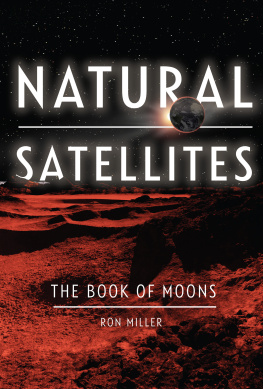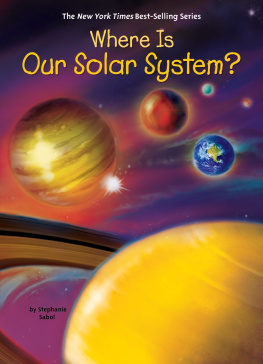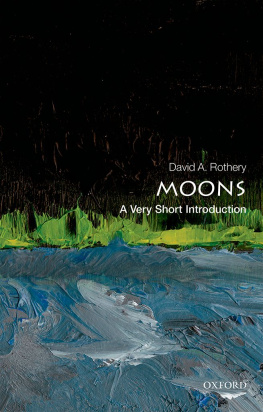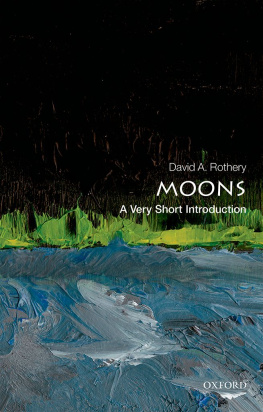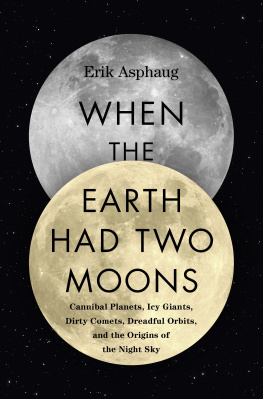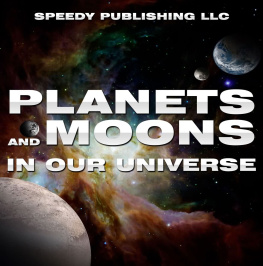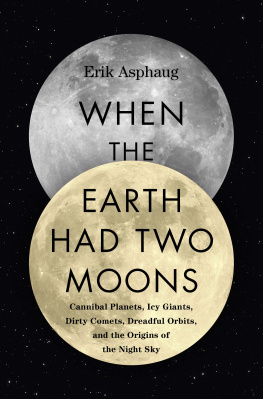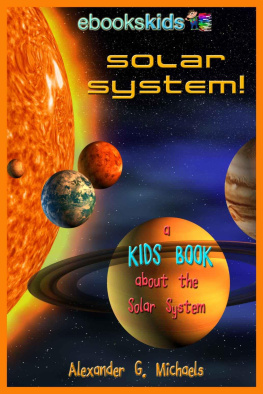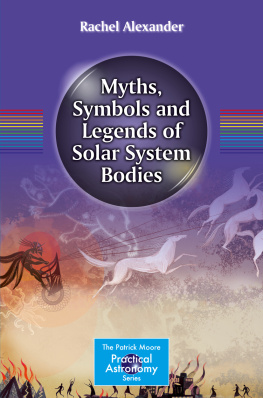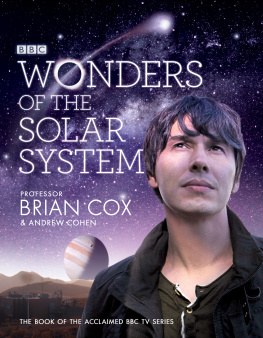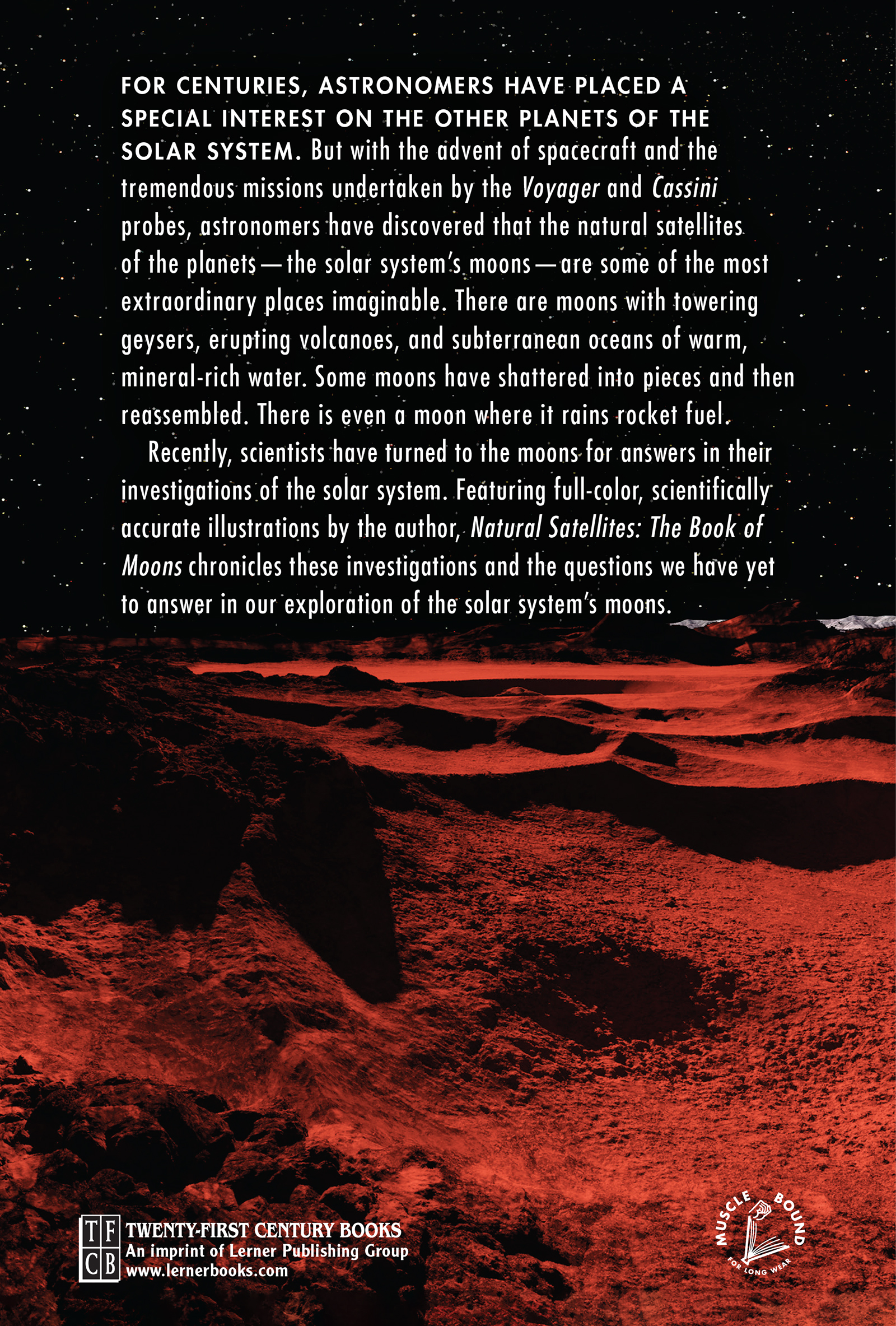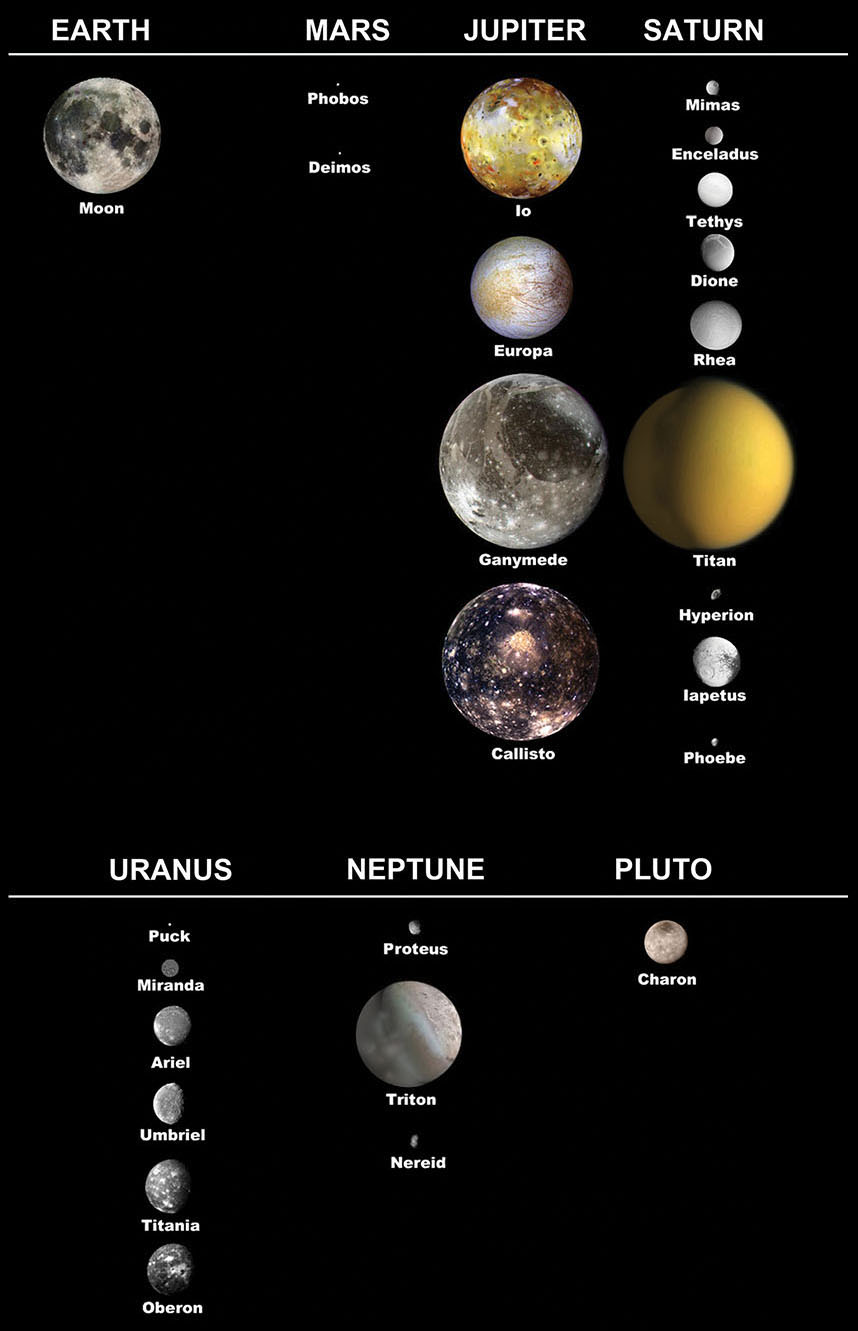This book is dedicated to Luca Scelfo Cavoli
Text copyright 2021 by Ron Miller
All rights reserved. International copyright secured. No part of this book may be reproduced, stored in a retrieval system, or transmitted in any form or by any meanselectronic, mechanical, photocopying, recording, or otherwisewithout the prior written permission of Lerner Publishing Group, Inc., except for the inclusion of brief quotations in an acknowledged review.
Twenty-First Century Books
An imprint of Lerner Publishing Group, Inc.
241 First Avenue North
Minneapolis, MN 55401 USA
For reading levels and more information, look up this title at www.lernerbooks.com .
Main body text set in Adobe Garamond Pro.
Typeface provided by Adobe Systems.
Library of Congress Cataloging-in-Publication Data
Names: Miller, Ron, 1947 author, illustrator.
Title: Natural satellites: the book of moons / Ron Miller.
Description: Minneapolis, MN: Twenty-First Century Books, [2021] | Includes bibliographical references and index. | Audience: Ages 1318 | Audience: Grades 1012 | Summary: The moons of our solar system feature extreme and potentially life-hosting environments. This book delves into the science behind the fascinating properties of various moons and explains why astronomers search for life on moons Provided by publisher.
Identifiers: LCCN 2020009972 (print) | LCCN 2020009973 (ebook) | ISBN 9781728419435 (library binding) | ISBN 9781728419442 (ebook)
Subjects: LCSH: SatellitesJuvenile literature. | Outer planetsSatellitesJuvenile literature.
Classification: LCC QB401.5 .M555 2021 (print) | LCC QB401.5 (ebook) | DDC 523.9/8dc23
LC record available at https://lccn.loc.gov/2020009972
LC ebook record available at https://lccn.loc.gov/2020009973
Manufactured in the United States of America
1-49062-49265-11/2/2020
Table of Contents
Introduction
I ts hard to imagine the night sky without the Moon. Next to the sun, our moon is the largest, brightest object in the sky. Sometimes the Moon is as big, round, and brilliant as a spotlight, and sometimes it is a thin crescent, like a pale eyelash. Sometimes it is not even visible in the night sky but appears during the day. With a small telescope or even a pair of binoculars, we can explore the side of the Moon that faces Earth. We can see craters, vast plains, valleys, and mountains. It sometimes looks as if we could reach out and touch it.
Scientists have done just that. Spacecraft have photographed and mapped virtually every square foot of the Moon, probes and rovers have explored it, and astronauts have walked on it and even brought back samples of its surface. Astronauts also brought back pictures of the Moon, showing a place that is as stark as a desert but also beautiful.
Earths moon is far from alone. Most of our neighbors in the solar systemJupiter, Saturn, Uranus, Neptune, and Plutohave multiple moons that are very different from Earths moon. In fact, Mercury and Venus are the only planets with no moons.
Despite how much we have explored our own moon, it wasnt until the late twentieth century that astronomers realized how diverse and interesting the other moons of the solar system really are. Previously, scientists had largely ignored the satellites orbiting other planets. Many of these moons are small, and they are all very distant, making them difficult to study. For example, Titan, the largest moon of Saturn and the second-largest moon in the solar system, was discovered by Christiaan Huygens in 1655, but no one knew that it had an atmosphere until 1944. Until the 1970s, all that any astronomer could tell you about any of the solar systems moons was their approximate size.
This changed when spacecraft made the first close-up flybys of many of the moons. The Voyager 1 and Voyager 2 spacecraft launched in 1977. Two years later, they arrived at Jupiter. For the first time, astronomers got a close look at moons Galileo had discovered more than three hundred years earlier. The moons were no longer tiny specks in a telescope but real worlds with their own histories, geologies, and landscapes. The Voyager spacecraft continued on to Saturn, where in 1980 and 1981 they took the first close-up photos of many of that planets moons, including mysterious, cloud-shrouded Titan. While Voyager 1 didnt travel past any other planets, Voyager 2 flew by Uranus in 1986 and Neptune in 1989, collecting photos of many of those planets moons.
Astronomers discovered that every moon in the solar system had its own set of unique features. While the primary goal of the two spacecraft had been to explore Jupiter, Saturn, Uranus, and Neptune, some of the biggest surprises, from fiery volcanoes to enormous canyons to geysers that shoot snowy ice crystals hundreds of miles into the sky, were found on the planets moons. Such features, once relegated to the realm of fantasy, proved that the moons were far from boring, and some of them were active . Things were going on. These discoveries changed everything. Astronomers looked on the moons of the solar system with newly opened eyes. Instead of being footnotes, the moons became objects of special interest.
In the decades following the Voyager discoveries, many other spacecraft have visited some of the solar systems moons, and scientists plan to send dedicated orbiters and landers to some moons. Their goal is to find out how the moons came into existence, why they look the way they do, what they might tell us about the birth of the solar system, and perhaps even whether they harbor life. And in the future, the solar systems moons may serve as way stations on the road to humankinds exploration of space. There is, after all, a moon where it rains rocket fuel. In light of so many unanswered questions and wonderful possibilities, astronomers are finally giving the moons the attention they are due.
The major moons of the solar system, to scale
1
The Birth of the Solar System
T he word planet comes from a Greek word meaning wanderer. Originally, it referred to five bright stars in the night sky that did something unusual. Unlike the thousands of other stars in the sky, which always remained in the same place, the planets moved around quite a bit. No one knew why they did this, but observers assumed there must be something very special about them. To recognize this, the ancient Romans named them after their gods: Mercury, Venus, Mars, Jupiter, and Saturn.
For thousands of years, that was what the word planet meant: a special kind of moving star. That changed during the winter of 1610 when the Italian scientist Galileo Galilei became the first person to turn a telescope toward the night sky. He saw that Venus and Mercury showed phases like the Moon, appearing at times like a crescent and at other times like a ball, and Jupiter seemed to be circled by four tiny moons of its own, just as Earth is circled by its moon. And as for Earths moon, once thought to be a perfectly smooth sphere, Galileo found it to be full of inequalities, uneven, full of hollows and protuberances, just like the surface of the Earth itself, which is varied everywhere by lofty mountains and deep valleys.
Scientists soon realized that Earth was just one member of a system of worlds that all orbited the sun: the solar system (named for Sol, Latin for sun). People developed many theories about the origin of the solar system and its planets. One of the earliest scientific theories was published in 1749 by the French naturalist Georges-Louis Leclerc. Leclerc suggested that a giant comet had once collided with the sun. This collision blew masses of material off the sun that eventually became the planets. In 1755 philosopher Immanuel Kant said that the sun and planets formed from a vast, nebulous cloud of dust and gas billions of miles in diameter, a theory that was further developed by mathematician and philosopher Pierre-Simon Laplace in 1796. As the cloud contracted under its own gravity, the theory went, the sun formed at the center. Meanwhile, the cloud began to rotate, which caused it to flatten out into a ring or series of rings. The planets formed within these rings, and their moons formed around them the same way the planets had formed around the sun.

